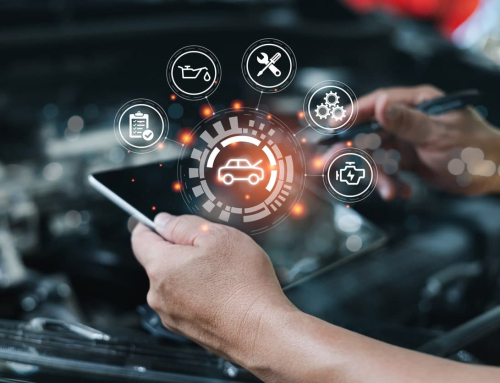Customer Service Chatbots
Table of Contents
- What Is an AI Customer Service Chatbot?
- What Does a Customer Service Chatbot Do?
- Embracing Automation
- Improve Customer Support Experience
- Benefits of AI Customer Service Chatbots
- What to Look for in Your Chatbot
- Keeping Up With Trends in Customer Service Chatbots
- How to Get Started With Your Customer Service Bot
- Analytics to Track Your Customer Service Chatbot
- Enhance Your Chatbot Experience With ROI CX Solutions
- FAQs
Introduction:
Customer service chatbots are revolutionizing customer service, and this detailed guide from ROI CX Solutions explores their transformative power. Uncover AI chatbots’ myriad features and benefits, from seamless multichannel support to significant cost savings. For newcomers and veterans alike, our guide serves as a beacon through the evolving landscape of customer service technology.
Time to read: 10 minutes
Key Takeaways:
- A New Era in Customer Experience: Chatbot support autonomously handles text-based interactions, freeing up live agents for complicated tasks. It could potentially handle 70% of digital workplace transactions by 2025.
- Elevating Customer Satisfaction to New Heights: Research indicates a strong preference for customer service bot interactions, with 62% of patrons favoring them over queues. Automation aligns with tech advancements, freeing staff for critical tasks, reinforcing the customer experience, and boosting confidence and optimism.
- Empowering Customers and Enhancing Support: These tools put customers in control, providing immediate responses and guiding them to the appropriate department. The integration of chatbots for customer service is a testament to balancing technological advancements with human expertise, creating customer-centric contact centers that prioritize making customers feel valued and understood.
- Core Features and Strategic Advantages: AI chatbots for customer service offer support with industry-specific responses. These features minimize response times and uphold security standards, which are vital for customer satisfaction and long-term loyalty.
What Is an AI Customer Service Chatbot?
Artificial intelligence (AI) customer service chatbots interact with customers freely via text-based chat. Though chatbots have been around for decades, their true potential emerged recently with advances in generative AI and Natural Language Processing (NLP), accelerated by the COVID-19 pandemic. Chatbot services are revolutionizing the CX industry and are expected to manage 70% of all digital workplace transactions by 2025.
What Does a Customer Service Chatbot Do?
AI-powered customer service chatbots, sometimes called virtual assistants, are designed to interact with customers in real time, offering immediate support and resolving routine inquiries. Key features include:
- Compliance: Adhering to data privacy and regulatory standards is crucial. Chatbots ensure compliance by following established protocols, safeguarding customer information, and maintaining trust.
- Escalation to Human Agents: Chatbots can transfer to live agents for complex issues requiring human intervention, balancing automation with human expertise.
- Increased Efficiency: Chatbots handle virtually unlimited interactions, freeing human agents to handle more challenging tasks. They also offer strategic insights by annotating interactions and optimizing customer service processes.
- Multichannel Support: Chatbots can link with websites, messaging apps, and social media, using your knowledge base to provide answers.
Embracing Automation
Many perceive automation as impersonal, but advances in AI and NLP are reshaping this view. Embracing automation combines cutting-edge technology with your knowledge base, allowing staff to handle intricate tasks. This shift allows agents to specialize in resolving customer issues, enhancing the overall experience. Recent studies show:
- 87.2% of consumers rate their interactions with bots as neutral or positive.
- 62% of customers would rather use an online chatbot than wait in a queue.
Improve Customer Support Experience
Navigating today’s dynamic landscape can be challenging, especially with evolving customer expectations. Integrating chatbot services allows human agents to focus on tasks that demand empathy and nuanced understanding, creating a blend of technology and human touch essential for a modern, efficient, customer-centric approach. Customer service chatbots help achieve this by:
- Enable Customers: Chatbots allow customers to manage inquiries independently. They can specify their needs by navigating structured prompts, ensuring quick and effective resolution.
- Providing Immediate Answers: With 24/7 availability, chatbot support delivers instant solutions and maintains customer engagement.
- Directing to the Right Department: Advanced algorithms like NLP analyze customer interactions, directing them to the appropriate department and streamlining resolution processes.
- Enhancing Personal Interactions: Customer service chatbots use AI and NLP technology to engage and interact with customers, transforming routine inquiries into pleasant interactions.

Benefits of AI Customer Service Chatbots
There are many other benefits of using AI chatbots for customer service, some of which are outlined below.
- Cost Savings: By handling common queries and repetitive tasks, chatbots decrease the need for extensive human intervention, leading to substantial savings in operational costs.
- Consistency: Chatbots deliver consistent and precise answers, minimizing the risk of human error and ensuring customers receive reliable information every time.
- Scalability: AI chatbots for customer service can manage increasing interaction volumes without coverage gaps, maintaining service quality and response times during peak periods.
- Industry-specific: Chatbot support is customizable to various industries, from scheduling appointments to managing bank inquiries.
What to Look for in Your Chatbot
When looking for a chatbot to implement for your contact center, there are a few things to look for. Here is a list of some things to look for and why they are important.
AI-Powered Responses
AI-driven chatbots use Machine Learning (ML) to improve over time. They will learn from interactions, adapt to new scenarios, and continuously enhance their responses, providing accurate and relevant information even as user queries evolve.
Analytics and Insights
Good chatbots should provide performance metrics and actionable insights. Access to these analytics will help you optimize chatbot performance, identify bottlenecks, and refine conversational flows.
Compliance and Security
Every industry has its own standards and data protection regulations. Like a live agent, your chatbot will also be subject to those same regulations and laws. It will need to be able to handle sensitive information securely and comply with privacy laws.
Context Retention
AI customer service bots should remember previous interactions like live agents to maintain context. A chatbot that forgets context frustrates users. Seek solutions that retain information throughout the conversation, allowing smoother interactions.
Continuous Learning and Maintenance
As with a live agent, you should monitor and update your chatbot’s performance periodically. Choose the solution that allows you to fine-tune the chatbot’s behavior, add new intents, and improve accuracy over time.
Conversational Abilities
A customer service chatbot must emulate human-like conversations. Prioritize customer service chatbots that comprehend natural language, provide contextual responses, and handle troublesome queries, ensuring smooth transitions between topics.
Customization and Flexibility
Not all businesses are the same, even within similar industries, and chatbots shouldn’t be, either. Once you have implemented the system, you should be able to customize your chatbot to your company’s specific needs and make changes.
Flawless Escalation
There are times when issues require human intervention. Guarantee that your customer service chatbot transfers users to a live agent as necessary. A smooth transition prevents frustration and helps maintain customer satisfaction.
Multichannel Integration
Choose a chatbot that meshes smoothly with your existing platforms, such as websites, social media, messaging apps, etc. Doing this helps create a consistent customer experience and allows users to engage via their preferred channel.
Personalization Capabilities
Effective customer service bots tailor responses based on user profiles and previous interactions, improving user satisfaction. Look for chatbots that retrieve user data and provide relevant solutions.
Keeping Up With Trends in Customer Service Chatbots
The future of AI chatbots in customer service is poised for significant advancements. AI customer service bots will become more sophisticated as technology evolves, offering upgraded user experiences and operational efficiencies.
What Does the Future Look Like?
AI chatbots will continue to improve their integration with customer service platforms, ensuring fluid interactions across multiple channels. Advances in NLP and ML will enable chatbots to handle tough queries precisely. The evolution of conversational AI will make interactions nearly indistinguishable from human communication.
Recent and Anticipated Changes
Integrating chatbots with Internet of Things (IoT) devices will allow for real-time problem-solving and proactive customer service. A popular example of IoT chatbot support is Siri from Apple and Alexa from Amazon. Siri and Alexa have limited self-autonomy in resolving technical issues and can help escalate complex issues to a live customer service agent.
The future of AI customer service bots promises greater sophistication and integration. As chatbots integrate with IoT devices, real-time problem-solving proactive customer service will become the standard, not the exception.
How to Get Started With Your Customer Service Bot
Merging customer service chatbots with your contact center operations requires meticulous planning and execution. Following these steps, you can lay a solid foundation for successfully integrating chatbots into your contact center operations.
Integration Tips
Evaluate your current systems to identify where chatbot services can augment human interactions. Incorporate chatbots into your customer service channels for a cohesive support ecosystem. Use APIs and integration tools to connect chatbots with CRM platforms and knowledge bases, facilitating fluid data exchange and improved customer experience.
Set Objectives
Establish measurable customer service chatbot objectives to track performance and foster improvement. Define key performance indicators (KPIs) like response time, resolution rates, and customer satisfaction scores to assess chatbot effectiveness. Continuously monitor and analyze chatbot performance data to optimize strategies and align with overarching business goals.
Training Staff
Your contact center staff needs to be well-trained to work effectively with chatbots. Teach agents about chatbot functionalities, troubleshooting, and escalation protocols for flawless human-AI transitions. Encourage continuous learning to build confidence and proficiency, making chatbots integral to your customer service strategy.

Analytics to Track Your Customer Service Chatbot
After implementing your customer service chatbot, it’s crucial to track and analyze data to help optimize performance and achieve business goals. Beyond standard metrics, focus on key analytics that offer deeper insight into your chatbot’s effectiveness.
- Conversation Abandonment: Monitor the rate at which users abandon chatbot conversations before resolution. High abandonment rates may indicate issues with usability, complexity, or relevance of responses.
- Resolution Rate: Determine the percentage of inquiries resolved during the initial chatbot interaction and the escalation frequency to a live human agent. This will give insight into whether the customer service chatbot is a help or a hindrance to your customers.
- Response Time: Track the chatbot’s average response time when responding to customer inquiries. Prompt and timely responses contribute to positive user experiences, while delays may lead to frustration and dissatisfaction.
- User Satisfaction: Assess customer satisfaction by soliciting feedback on the chatbot experience via surveys or post-interaction ratings. This metric yields critical insights into the quality of interactions and identifies opportunities to elevate overall satisfaction.
Regularly evaluating these analytics helps identify improvement areas and refine chatbot performance, ensuring high customer service standards. Effective use of chatbots allows your contact center to deliver efficient, accurate, and satisfying customer interactions. This drives positive outcomes and fosters long-term customer loyalty.
Enhance Your Chatbot Experience With ROI CX Solutions
AI chatbots are an excellent way to improve customer experience and can cover several functions to help you have more satisfied users. Connect with one of our CX experts to learn more about how we can assist you in implementing or improving a customer service chatbot to meet your company’s needs.







